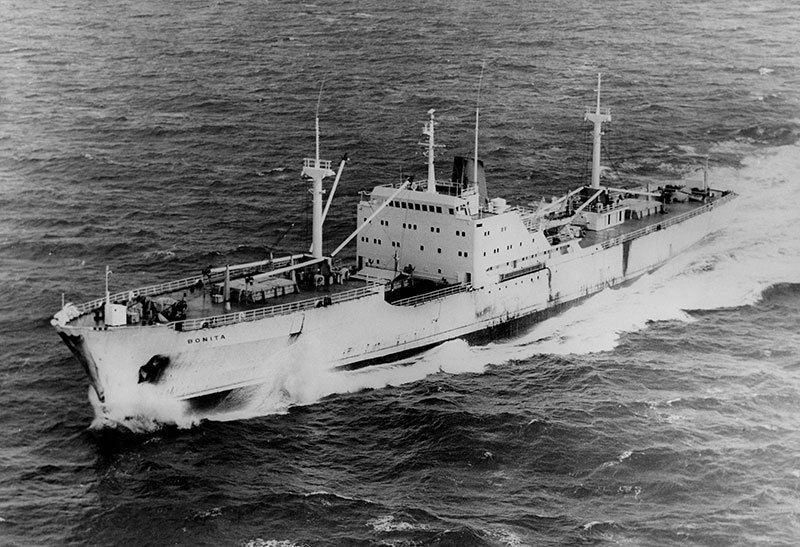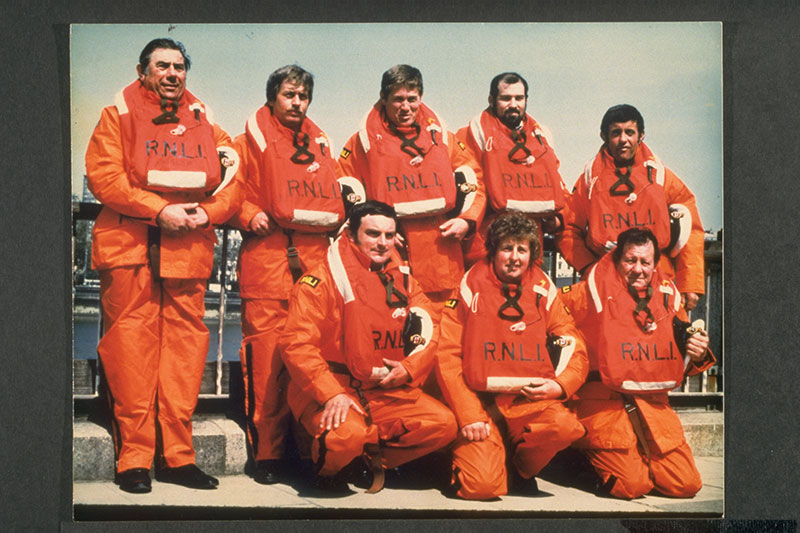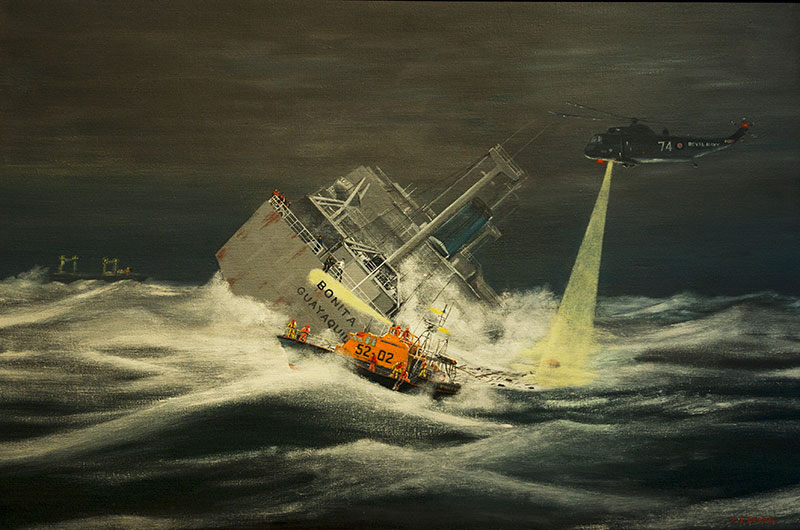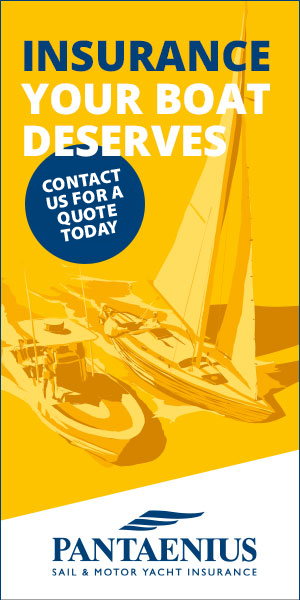The RNLI is marking the 40th anniversary of the Bonita rescue, when a volunteer lifeboat crew faced hurricane conditions to save the crew and passengers of an 8,000 tonne Ecuadorian cargo ship.
On 13 December 1981, a volunteer crew from St Peter Port RNLI Lifeboat Station launched to the rescue of the Bonita; an Ecuadorian cargo ship loaded with fertiliser, sailing from Hamburg to Panama, caught in a hurricane in the English Channel.
The Bonita had 36 people aboard: Ecuadorian crew members, engineers and an electrician. The Captain and First Engineer also had their wives and four children aboard.
The huge waves that were lashing against the Bonita’s port side caused her to list heavily to starboard which shifted the ship’s cargo. She was soon unable to right herself and the ship’s engine lost power. The RNLI St Peter Port lifeboat volunteers on Guernsey launched to the cargo ship at 1.23pm after learning the Bonita’s Captain had put out a mayday.

Meanwhile, a Royal Navy rescue helicopter headed to the scene and successfully managed to take four people, including the Captain’s wife and toddler, off the Bonita. However, the helicopter’s rotor blades started to ice up, forcing the aircraft crew to retreat.
Battling 15m waves, the lifeboat crew arrived on scene to find the Bonita now listing at 45°. Despite the shrieking winds around them, the lifeboat volunteers managed to usher the Bonita crew towards the stern. Aboard the Bonita, shock, panic and exhaustion were beginning to take over.
Two crew members, including the Second Engineer, had broken legs. St Peter Port Lifeboat Coxswain, Mike Scales, brought the lifeboat alongside and two men successfully jumped aboard from the stern. Unexpectedly, a third man jumped from the Bonita and mistimed his leap, falling head-first on to the lifeboat and sustaining a serious head injury. He was carried into the wheelhouse where Mechanic Bob Vowles administered first aid.
Following this failed attempt to board the lifeboat, Mike Scales was concerned that further attempts would risk all those involved. The new plan was to approach the Bonita head-on and throw a line, so people could attach it to themselves and jump into the sea. The RNLI volunteers could then pull them aboard to safety. The plan required great teamwork and boat handling skills to work. The First Engineer’s wife and two daughters were the first to be pulled aboard but not all the transfers went so smoothly.
Whilst attempting to reach the Sir William Arnold, a man let go of the line after jumping into the sea and stopped breathing. Thankfully, the RNLI crew managed to pull him aboard him and he was soon resuscitated.
Several rescue helicopters were now on scene, but the conditions were too challenging to safely rescue those on board the Bonita. The Second Engineer, who had broken both his legs, could not make it to the lifeboat. After three attempts, a rescue helicopter managed to hover low enough to secure the injured man and airlift him to hospital.
In total, the RNLI volunteers saved 29 people who were then taken to Torbay Lifeboat Station. The lifeboat, her crew and all the casualties of the Bonita reached Devon at 11.13pm, after more than 10 hours at sea.
Sadly, two Bonita crew members were lost during the rescue. The first died after he fell and hit the side of the ship during the rescue, killing him instantly. Another man who had suffered a head wound later died in hospital, due to his injuries.
Six days after the Bonita rescue, on 19 December 1981, the Penlee lifeboat crew launched to a coaster, Union Star, which was also battling hurricane winds. The crews of both vessels were all lost. It was the worst lifeboat tragedy in living memory.
This year, Penlee Lifeboat Station marked the 40th anniversary of the tragedy with a flotilla of lifeboats and the laying of wreaths in memory of the 16 lives lost.

In May 1982, the St Peter Port crew attended the RNLI’s Annual Presentation of Awards. Coxswain Mike Scales received a gold medal while the crew all received a bronze. The Sir William Arnold now serves as a floating classroom and museum in London. Owner Colin Trowles restored the lifeboat to teach visitors about the RNLI and its courageous volunteers.
This Christmas, many RNLI volunteers will leave their loved ones behind to answer the call, but these rescues would not be possible without donations from the RNLI’s generous supporters.
To make a donation to the RNLI’s Christmas Appeal visit: RNLI.org/Xmas
















